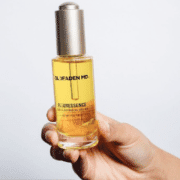The Basics of Understanding Your Beauty Labels
Wondering whether you can use the old beauty products or not?
The shelf life, or expiration date, of a cosmetic or personal care product is the period during which the manufacturer has determined a product to be best suited for use.
There are no regulations or requirements under current U.S. laws that require cosmetic manufacturers to print expiration dates on the labels of cosmetic products. However, manufacturers have the responsibility to determine shelf life for products as part of their responsibility to substantiate product safety.
We sat down with Dr. G to understand more about the science behind expiration dates in personal care products, why it’s important and what to look out for.
Why are product expiry dates important?
Expiration dates and PAO (period after opening) icons (an open jar with a length of time indicated ie 12M) are a useful guideline to monitor contamination. However, the type of packaging also plays into this. A product housed in a jar, which involves you dipping your finger in, can become contaminated more easily than say an airless pump (which is why we use this type of packaging whenever possible). When dipping fingers into keep product, always make sure your hands are washed and cleaned. There are also certain rules and laws per country that dictate expiration dates or PAO.
Should you be careful to note when you open your product?
Yes, but not in the panic sort of way. The reality is if you’re using your product correctly, you will probably use all before it will expire. Nowadays most products are so well formulated and marked with a PAO (period after opening) icon, that you do not need to worry, just
What happens if you use the product after the recommended use by date?
Most likely nothing, but it is not recommended.
Signs your products has expired: the smell has changed, the color has changed, the texture has changed or separated into two layers, there are dark spots in the product
What can happen to the active ingredients if you use them past their sell-by date?
They mostly become less effective but may case breakouts and a rash
Why do sell by dates vary by product type?
This is contingent upon the country and laws and what the product consists of. For example in the US OTC sunscreens and acne treatments are required to have an expiration date. This is also dependent upon what type of product and the ingredients. Ingredients such as retinoids are light sensitive and can breakdown quicker than your average moisturizer.
In Europe, cosmetic products with a lifespan longer than 30 months must show a “period after opening” (POA) time. That is, the time in months when the product will remain in good condition after the consumer has used the product for the first time. A symbol of an open cream jar is usually used instead of words and the time in months can be inside the symbol or alongside it. Although this symbol is frequently present on some U.S. cosmetics products, it is not required.


Leave a Reply
Want to join the discussion?Feel free to contribute!